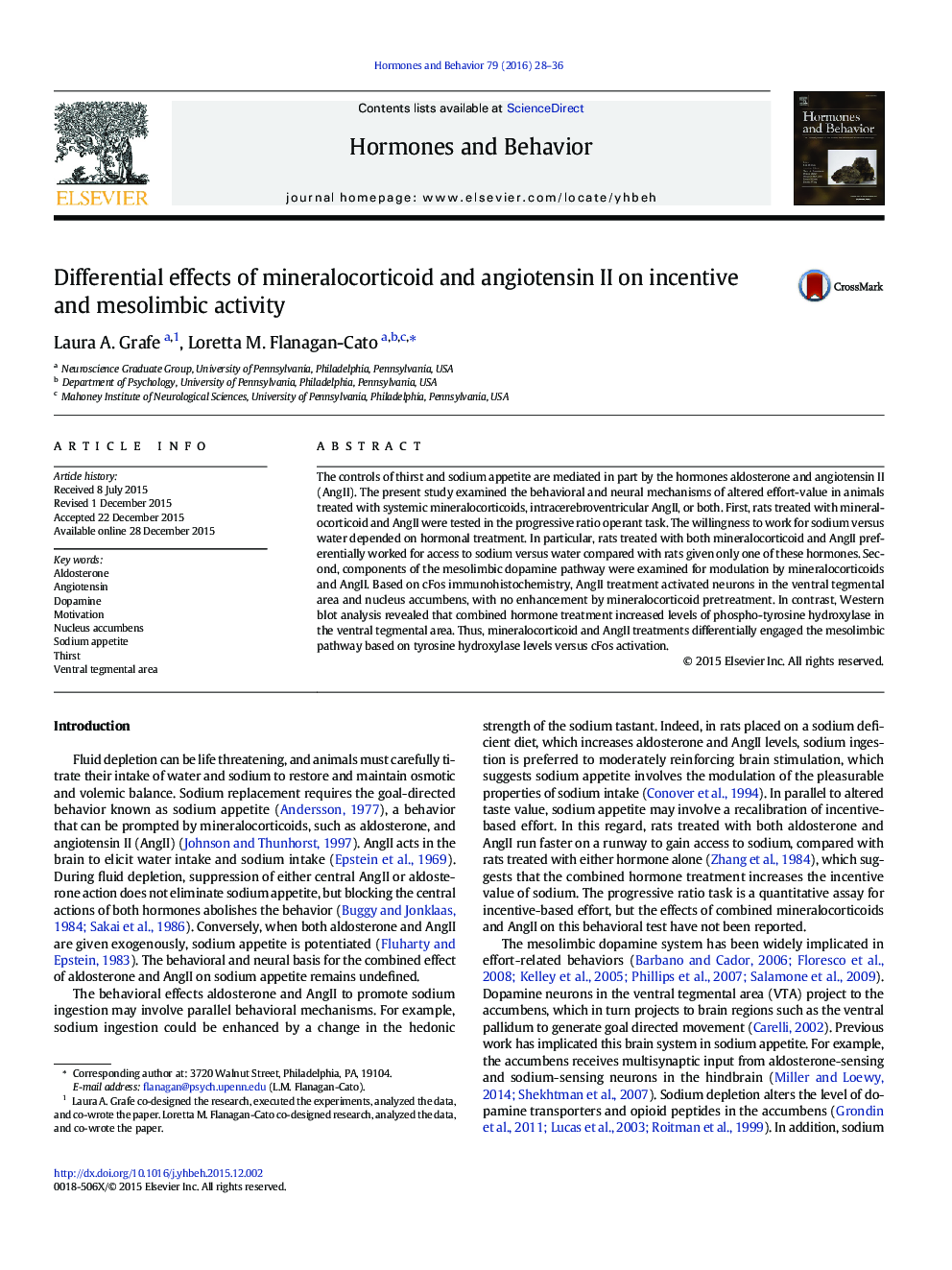| Article ID | Journal | Published Year | Pages | File Type |
|---|---|---|---|---|
| 323043 | Hormones and Behavior | 2016 | 9 Pages |
•Aldosterone and angiotensin II (AngII) promote sodium appetite.•Mineralocorticoid and AngII treatment increased effort for sodium access.•AngII treatment activated cFos expression in the mesolimbic system.•Mineralocorticoid increased phospho-tyrosine hydroxylase in mesolimbic system.•Thus, mineralocorticoid and AngII differentially modulate the mesolimbic system.
The controls of thirst and sodium appetite are mediated in part by the hormones aldosterone and angiotensin II (AngII). The present study examined the behavioral and neural mechanisms of altered effort-value in animals treated with systemic mineralocorticoids, intracerebroventricular AngII, or both. First, rats treated with mineralocorticoid and AngII were tested in the progressive ratio operant task. The willingness to work for sodium versus water depended on hormonal treatment. In particular, rats treated with both mineralocorticoid and AngII preferentially worked for access to sodium versus water compared with rats given only one of these hormones. Second, components of the mesolimbic dopamine pathway were examined for modulation by mineralocorticoids and AngII. Based on cFos immunohistochemistry, AngII treatment activated neurons in the ventral tegmental area and nucleus accumbens, with no enhancement by mineralocorticoid pretreatment. In contrast, Western blot analysis revealed that combined hormone treatment increased levels of phospho-tyrosine hydroxylase in the ventral tegmental area. Thus, mineralocorticoid and AngII treatments differentially engaged the mesolimbic pathway based on tyrosine hydroxylase levels versus cFos activation.
